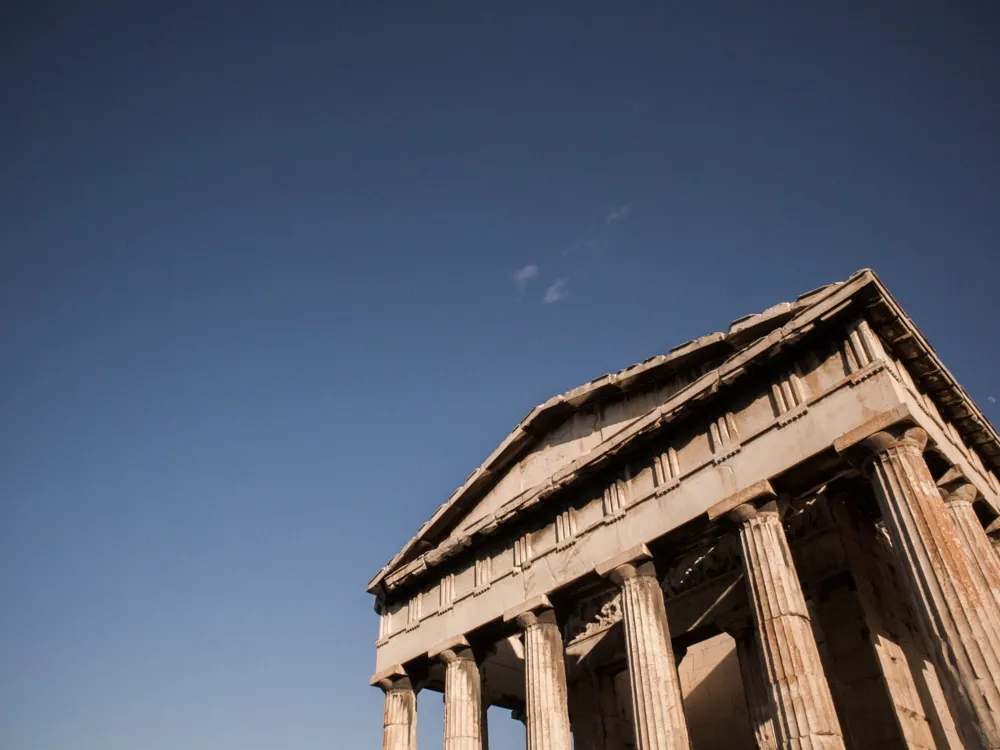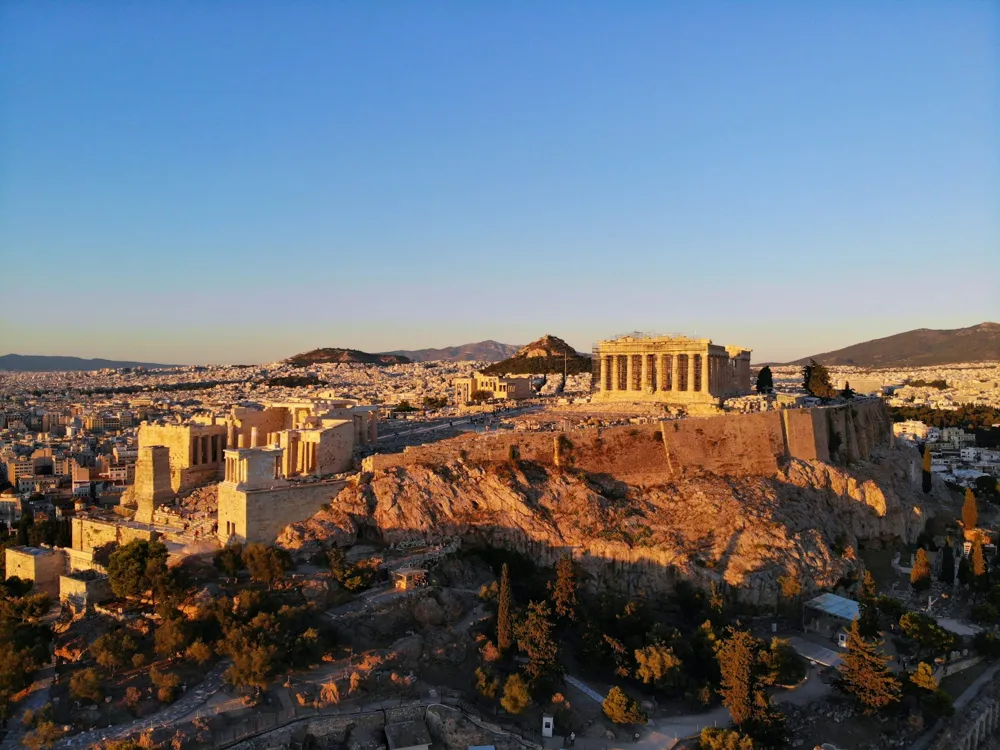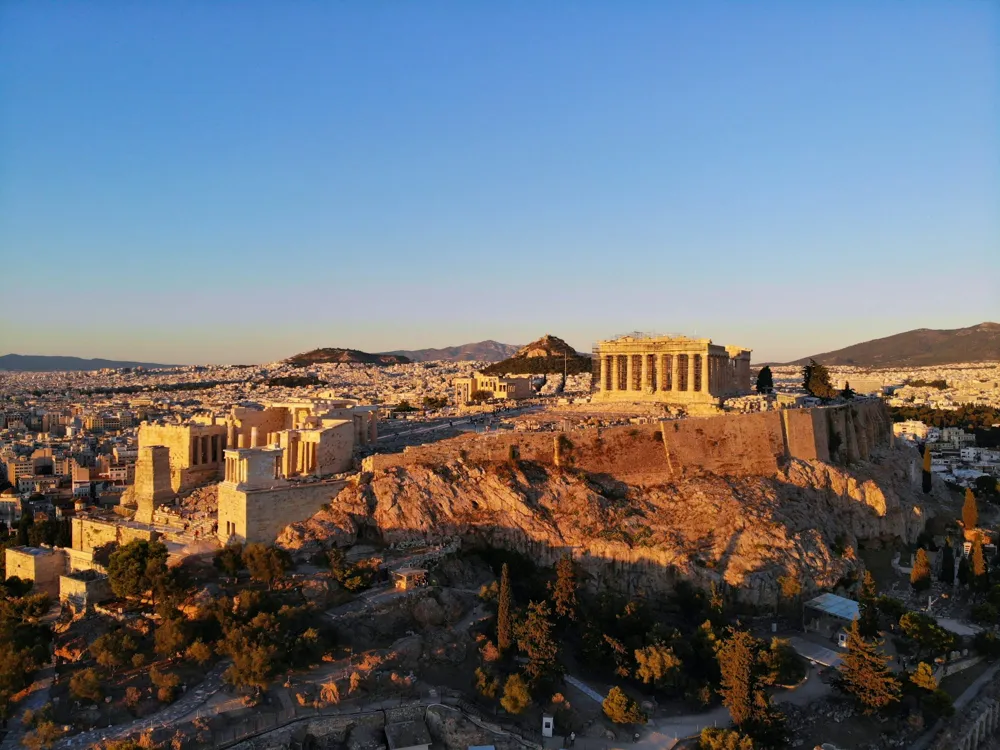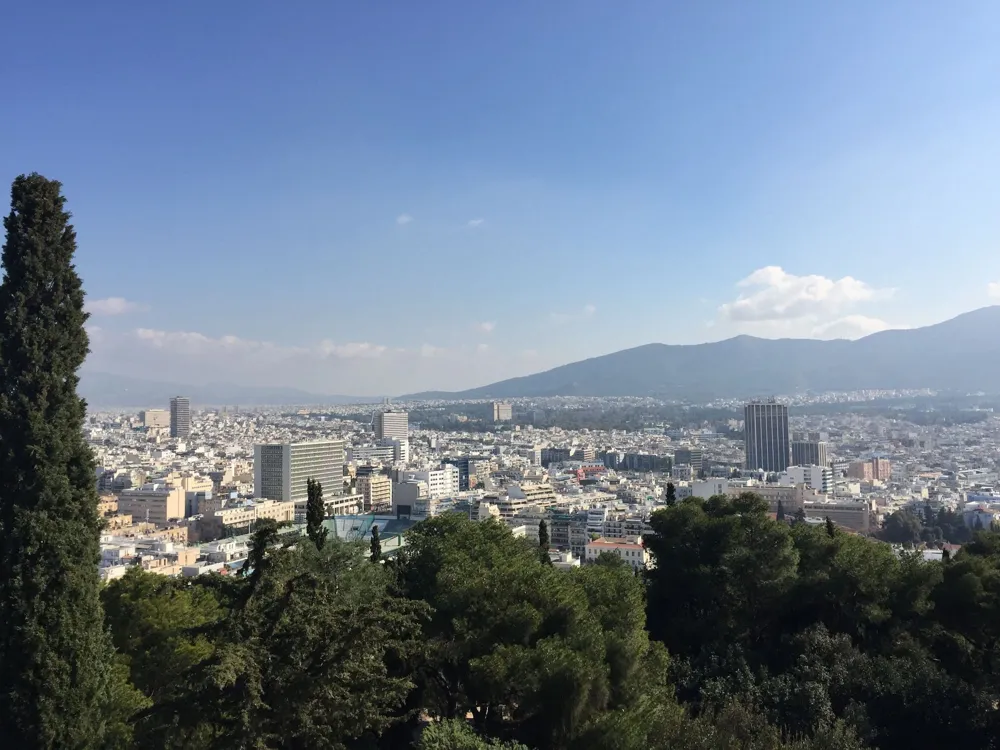The Philopappos Monument, a major gem in the heart of Athens, stands as a testament to the megacity's rich artistic and architectural heritage. This remarkable structure, perched on Mouseion Hill, offers not only a window into the ancient world but also stunning panoramic views of Athens, including the Acropolis. The monument was erected between 114 and 116 announcements in honour of Gaius Julius Antiochus Epiphanes Philopappos, a prominent Roman consul and director. Philopappos, a member of the royal family of Commagene, was greatly respected in Athens for his benefactions to the megacity, and his death in 116 announced the construction of this grandiose monument. The architectural brilliance of the Philopappos Monument is apparent in its intricate design and enduring construction. Erected from Pentelic marble, the same material used for the Parthenon, the monument stands as an emulsion of Greek and Roman architectural styles. The facade, adorned with elaborate busts and puppets, depicts scenes from Philopappos' life and his lineage, connecting him to the royal family of Commagene and the Roman Empire. Before visiting the Philopappos Monument, it's important to plan your trip. Check the rainfall cast, as the hill offers little shade and can be relatively hot during the summer. Wear comfortable walking shoes, as the path to the monument involves some uphill walking. It's also judicious to bring water and a cap for sun protection. Once at the monument, take your time to explore the area. The point isn't just about the monument itself but also the stirring views of Athens. Bring a camera to capture the scenic lookouts. Be aware of the major nature of the point and avoid touching or climbing on the monument to save its integrity. Understanding the literal and artistic significance of the Philopappos Monument enhances the visit. Consider hiring a companion or using a guidebook to learn about the monument's history and its part in Athens' history. This knowledge will enrich your experience and give you a deeper appreciation for the point. The Philopappos Monument is accessible by colourful means of transportation. Callers can take the metro to the Thissio or Acropolis stations, both of which are within walking distance of the point. Alternately, motorcars and hacks are available throughout the megacity, offering accessible access to the monument. For those who prefer to drive, parking can be set up in the nearby areas, though it's frequently limited. Walking from the megacity centre provides a scenic route, passing through major neighbourhoods and offering glimpses of Athenian life. Read More:Overview of Philopappos Monument
The Philopappos Monument is an exemplar of ancient Roman armature, showcasing the imagination and art of its generators. Its strategic position on the hill not only gave it a commanding view of the megacity but also assured its visibility, symbolising the influence and respect Philopappos held in Athens. Over the centuries, the monument has endured colourful periods of preservation, reflecting the literal and artistic shifts in Athens. moment, it remains a significant literal point, attracting thousands of callers who seek to connect with history and respect the beauty of ancient Greek and Roman armour.Architecture of Philopappos Monument
At the heart of the monument is a large niche, which formerly housed a grand statue of Philopappos, drafted with exquisite detail. Bordering this central figure were lower statues, representing Philopappos' royal ancestors. The combination of these rudiments created an important visual narrative, celebrating his life and heritage. The monument's structure, comprising a base, a tribune, and a set of stairs leading up to the main chamber, reflects the Roman influence in its design, while the sculptural rudiments and use of marble pay homage to Greek cultural traditions.Tips When Visiting Philopappos Monument
Plan Your Visit
Exploring the Site
Cultural Insights
How To Reach Philopappos Monument
Philopappos Monument
Athens
₹ 25,800 onwards
View athens Packages
Weather :
Tags : Monument
Timings : N/A
Entry Fee : N/A
Planning a Trip? Ask Your Question
Athens Travel Packages
View All Packages For Athens
Top Hotel Collections for Athens

Private Pool

Luxury Hotels

5-Star Hotels

Pet Friendly
Top Hotels Near Athens
Other Top Ranking Places In Athens
View All Places To Visit In athens
Faq on Athens
What is the Philopappos Monument in Athens?
The Philopappos Monument is an ancient Greek mausoleum located on Mouseion Hill in Athens, Greece. It was built in honor of Gaius Julius Antiochus Epiphanes Philopappos, a prince from the Kingdom of Commagene.
When was the Philopappos Monument built?
The Philopappos Monument was built in 114-116 AD by the Athenians to honor Philopappos, who was a benefactor of the city and held various official positions in the Roman Empire.
What is the significance of the Philopappos Monument?
The monument is significant for its architectural beauty and historical importance. It represents the fusion of Greek and Roman cultural influences and serves as a testament to the connections between the two civilizations during the Roman period.
How tall is the Philopappos Monument?
The Philopappos Monument stands at approximately 12 meters (39 feet) tall and is constructed from Pentelic marble, the same material used for the Parthenon and other iconic structures in Athens.
Can visitors enter the Philopappos Monument?
No, visitors cannot enter the Philopappos Monument itself, but they can admire its exterior and enjoy the panoramic views of Athens from the surrounding area, which is a popular spot for tourists and locals alike.
View athens Packages
Weather :
Tags : Monument
Timings : N/A
Entry Fee : N/A
Planning a Trip? Ask Your Question
Athens Travel Packages
View All Packages For Athens
Top Hotel Collections for Athens

Private Pool

Luxury Hotels

5-Star Hotels

Pet Friendly
Top Hotels Near Athens
Other Top Ranking Places In Athens
View All Places To Visit In athensFaq on Athens
What is the Philopappos Monument in Athens?
The Philopappos Monument is an ancient Greek mausoleum located on Mouseion Hill in Athens, Greece. It was built in honor of Gaius Julius Antiochus Epiphanes Philopappos, a prince from the Kingdom of Commagene.
When was the Philopappos Monument built?
The Philopappos Monument was built in 114-116 AD by the Athenians to honor Philopappos, who was a benefactor of the city and held various official positions in the Roman Empire.
What is the significance of the Philopappos Monument?
The monument is significant for its architectural beauty and historical importance. It represents the fusion of Greek and Roman cultural influences and serves as a testament to the connections between the two civilizations during the Roman period.
How tall is the Philopappos Monument?
The Philopappos Monument stands at approximately 12 meters (39 feet) tall and is constructed from Pentelic marble, the same material used for the Parthenon and other iconic structures in Athens.
Can visitors enter the Philopappos Monument?
No, visitors cannot enter the Philopappos Monument itself, but they can admire its exterior and enjoy the panoramic views of Athens from the surrounding area, which is a popular spot for tourists and locals alike.






















